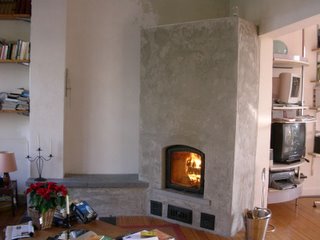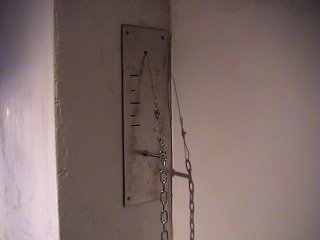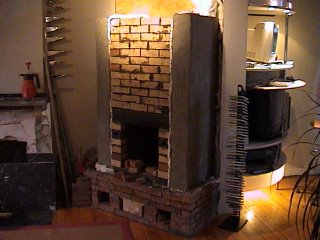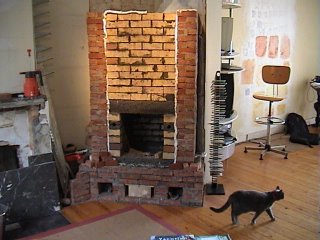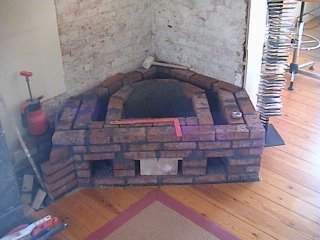diy masonry heater how to make the perfect fire 
Let me tell you right away: i keep trying. You see the difficulty is to deal with what appears to be contradictory demands. One the one side you need a lot of air to reach high temperatures in the firebox ( to get a clean combustion ) and on the other side the less air comes through the firebox, the more heat is transferred to the walls. There it is: a balance between these 2 objectives.
The balance is difficult to obtain consistently because it varies according the dryness of the wood, type of wood, draft of the chimney.
First dryness: you should never burn wood with a humidity content of more than 25%, the ideal being between 20% and 15%. Get yourself a humidity tester, i have a testo 606
http://www.testo.com/ . Even so i have noted that the slightest variation in humidity from one batch to the other impacts on air demand. One good advice, prepare your next firing as soon as possible. This will help the wood to get evenly dryer. Second, the denser the wood the harder it is to reach good internal temperatures. Therefore when using dense wood split it smaller than other woods. As a rule the denser your batch the more air you will need to get it going. Go ahead and open the ashdoor fully yes fully for a while. For light and drywood use less air especially if you have strong draft. I would leave the door ajar until you have real big flames all around yours logs. Then close the door with the vents open. When the flames start lowering, close your damper by half. When the flames start to change in pattern and they look more like lingering, close your damper further as well as all upper vents or injectors if applicable. Now your aim is to finnish your fire as soon as possible. Reduce the ashdoor air intake whenever possible but not so as to compromise the fire. Bear in mind that you want to terminate the fire as soon as possible and remember that it is at this stage that you are losing a lot of heat through the chimney. Finally at the ambers stage close the damper almost completely and close the ashdoor vents almost completely. If your firebox is real hot this stage should not last long. in my experience i get good results mixing hard and soft wood. That seems to give me the best of both worlds: good heat from soft wood Helping the wood to release Their dense gas, and good heat radiating from The Embers Of The hard wood. I Told You It Is A Challenge
how perfect the fire? I bluntly tell you, I am not yet arrived to make the perfect fire. Exercise is not easy because you have married two contradictory demands. On one side there is a maximum intake air to achieve high combustion temperatures and achieve the nirvana of non-pollution and on the other there is less fresh air fewer cooling and the more heat will be transmitted. This balance is difficult to obtain because the parameters are changing all the time (Atmospheric pressure, wood quality, wood drying, mounting problems of logs, size of logs etc..).
The most important thing is to work with dry wood moisture 20% + - 5%. I have a moisture meter Testo 606 which makes me good service.
basic rule does not make a fire with wood that is dry. You lose a lot in efficiency and pollution increase efrrayante manner. That being so, I found significant variations in rates of moisture within the same batch. To standardize all, I load my home as soon as possible. The residual heat drying wood and turn it on when Vou, it will dry evenly.
Deusio a dense liberated its gas more difficult and must be split smaller. My experience is that most wood is dense and requires more air. Do not be afraid to open the door to the ash box (main air supply large). Unlike a wood very dry and light requires less air especially if you have a good draft. For lightweight wood I leave the door between the ash-open until the flames are at the highest and strongest. Then I close the door, leaving open the tie. The air at the bottom of door is always closed and the top open.
When flames begin to decline, close the valve and a third when they are frankly low, close to this 3/4.A your goal is to finish fire as soon as possible. Stir the remaining logs once but not twice. Reduce a little air drafts from the bottom (ash box) and those completely from top but not enough to cripple the draw. This difficult stage should not last very long if you had a very hot fire.
I will next time the role of the injectors.
